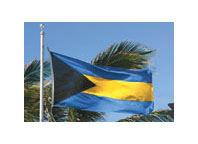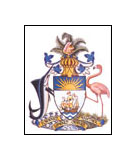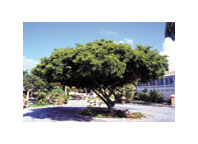About
Site Directory
Copyright © 2025 bahamas.yabsta.com
All Right Reserved
powered by 
Copyright © 2025 bahamas.yabsta.com
All Right Reserved
powered by 
BAHAMIAN FLAG
The unique design of black, aquamarine, and gold was first unfurled in April 1973, just 3 months prior to the nation’s independence. It was the result of a compilation of ideas from a large and varied creative pool made up entirely of Bahamians. Each colour represents something Bahamian: black for the strength and unity
of Bahamians - shaped in a forward-pointing triangle
to represent their determination - and aquamarine
and gold for the islands’ rich tropical resources of
the sea, land, and sun.

COAT OF ARMS
Adopted in late 1971, this Bahamian coat of arms replaced the original design assigned by Britain back in 1728. The preliminary design for the new coat of arms was the brainchild of Hervis Bain, a civil servant and recognized Bahamian artist. With a few alterations to the 18th century design, the coat of arms now represents something truly Bahamian. The conch shell, blue wavy lines, green palms, and the sun symbolize marine life, the sea, natural vegetation and the bright tropical sun of the islands. The ship represents Christopher Columbus’ Santa Maria, one of the three vessels which brought Columbus to his 1492 discovery of the new world (believed to have occurred in The Bahamas). The Bahamian national bird and fish - the pink flamingo and the blue marlin - support the shield, and the nation’s motto - “Forward Upward Onward Together” graces the lower section.
LIGNUM VITAE
Translated literally, the name of the Bahamian national tree means “tree of life”. Indigenous to the West Indies, Mexico, Central America, and the northern part of South America, this hardwood was originally recognized for its industrial uses and was largely exported from The Bahamas. It continues to be used as Bahamian “bush medicine” since it is believed that the tonic produced by steeping the bark will provide energy and act as an aphrodisiac. Clusters of small blue flowers bloom at the tip of the branches. The Lignum Vitae is most commonly found throughout the Out Islands, namely in Crooked Island and Exuma. Interestingly, it is scarcely found on New Providence, home to the nation’s capital of Nassau.